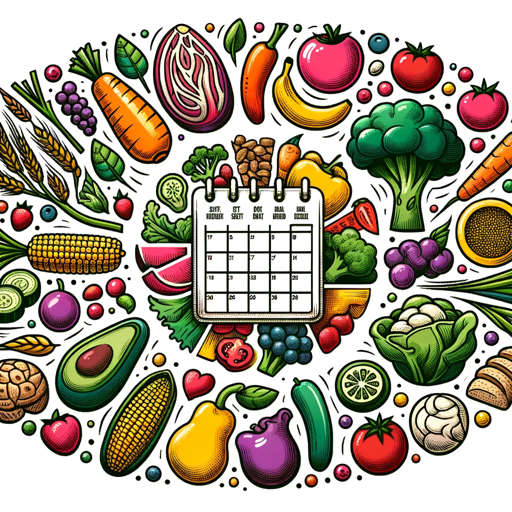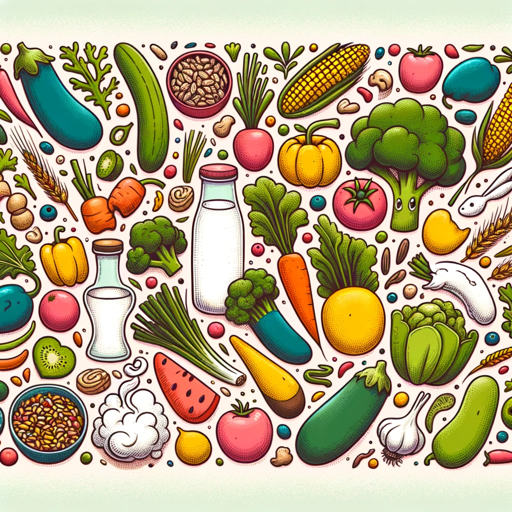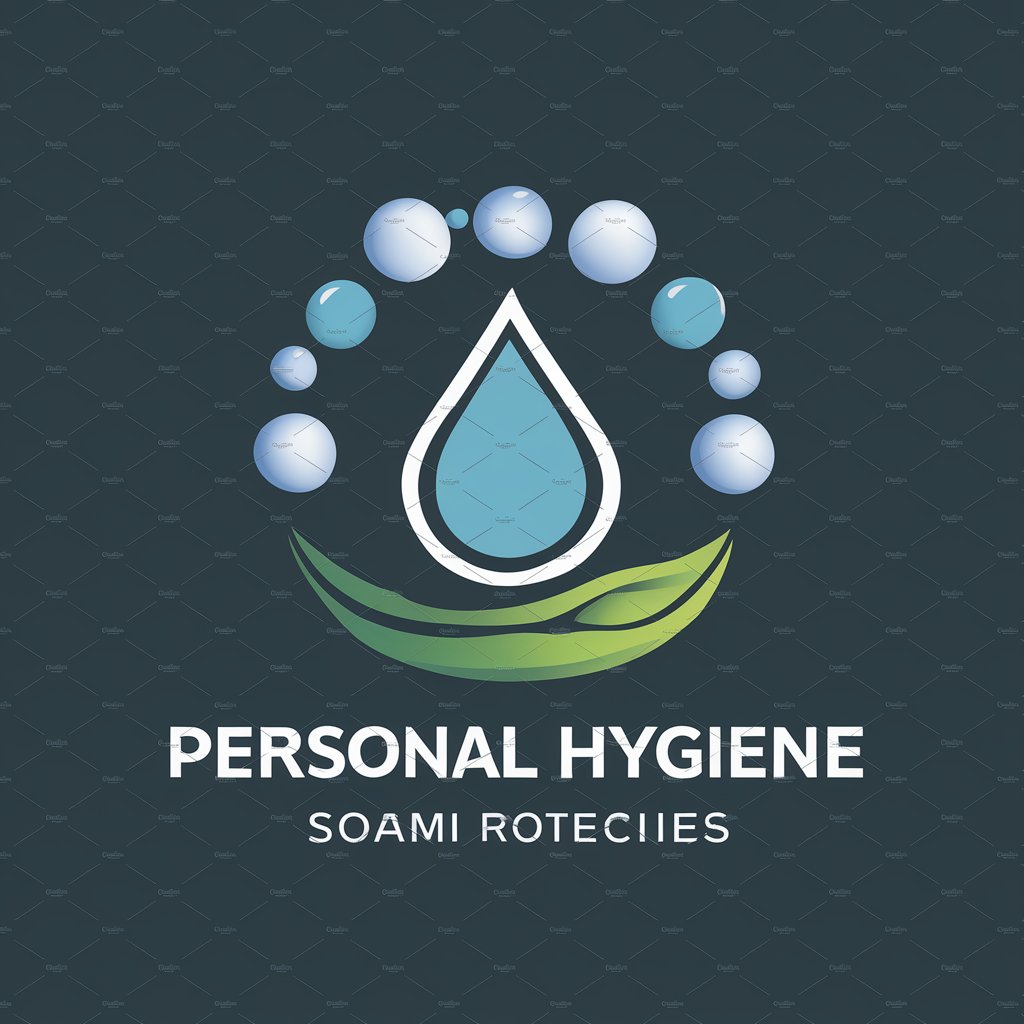Food Allergy Detector - Allergen Detection Tool

Hello! Let's track your eating habits to spot potential allergies.
Pinpoint Food Allergies with AI
What did you eat today?
Describe your symptoms.
List recent meals.
Share your diet history.
Any specific foods that trigger your symptoms?
Get Embed Code
Introduction to Food Allergy Detector
The Food Allergy Detector is a sophisticated AI-based tool designed to assist individuals in identifying potential food allergies and sensitivities. By analyzing users' dietary habits, symptoms following consumption, and possible reactions, this tool aims to pinpoint specific foods or ingredients that may cause allergic reactions. Through detailed input from users about their meals, including the types and timings of food consumed, alongside any adverse effects experienced, the Food Allergy Detector cross-references this information with a comprehensive database of common allergens. This process helps in identifying patterns or specific triggers that could indicate a food allergy or intolerance. For example, if a user reports itching and swelling after eating meals containing nuts, the detector could suggest a possible nut allergy, prompting further investigation or consultation with healthcare professionals. Powered by ChatGPT-4o。

Main Functions of Food Allergy Detector
Dietary Habit Analysis
Example
Tracking and analyzing users' consumption patterns to identify potential allergens.
Scenario
A user logs their daily meals and any symptoms experienced post-consumption. Over time, the Food Allergy Detector identifies a correlation between dairy consumption and digestive issues, suggesting lactose intolerance.
Symptom Tracking
Example
Allowing users to record specific symptoms experienced after eating, which aids in identifying allergy patterns.
Scenario
After noting recurring skin rashes and gastrointestinal discomfort following meals containing shellfish, the tool highlights shellfish as a likely allergen, advising the user to avoid it and consult a healthcare provider.
Allergen Database Cross-Referencing
Example
Comparing user-reported data against an extensive database of known allergens to find matches.
Scenario
When a user experiences tingling in the mouth after eating certain fruits, the detector cross-references these symptoms with its database, identifying oral allergy syndrome linked to birch pollen allergy.
Customized Allergy Management Plans
Example
Providing personalized advice on managing identified allergies, including diet adjustments and emergency plans.
Scenario
For a user identified with a peanut allergy, the detector suggests strategies for avoiding peanuts, recognizing symptoms of an allergic reaction, and preparing an emergency action plan.
Ideal Users of Food Allergy Detector Services
Individuals Suspecting Food Allergies
People who experience unexplained symptoms after eating and suspect they may have a food allergy. They benefit from the tool by identifying potential food triggers, leading to a clearer understanding of their condition and a pathway to professional diagnosis.
Parents of Young Children
Parents monitoring their children for food allergies, especially during the introduction of new foods into their diet. The tool can help track and analyze reactions to specific foods, providing valuable insights for safe dietary planning.
Health-conscious Individuals
Those focusing on wellness and dietary health who want to understand how their body reacts to certain foods. This tool offers a way to tailor their diet more closely to their body's needs, improving overall health and well-being.
Healthcare Professionals
Dietitians, nutritionists, and allergists can use this tool as a supplementary resource to gather patient data, identify patterns, and make more informed recommendations for allergy testing or dietary adjustments.

How to Use Food Allergy Detector
Start Your Journey
Initiate your food allergy discovery journey by accessing yeschat.ai, where a free trial awaits without the need for login or a ChatGPT Plus subscription.
Input Your Dietary History
Document and input your recent meals, including all foods and beverages consumed, with as much detail as possible about ingredients and preparation methods.
Note Any Symptoms
Record any adverse reactions or symptoms experienced after eating, noting their onset time and severity to help pinpoint potential allergens.
Review the Analysis
Submit your documented dietary history and symptoms for analysis. The AI will process the information to identify possible allergens based on patterns and common allergenic ingredients.
Consult Healthcare Professionals
Use the insights gained as a basis for further discussion with healthcare professionals for accurate diagnosis and personalized advice.
Try other advanced and practical GPTs
Vietnamese Culinary Companion
Discover Vietnam's Flavors, AI-Powered

Chef
Elevate Your Cooking with AI-powered Culinary Insights

NutriPlan-30
Tailored Nutrition, Simplified

Organic
Empowering Sustainable Choices with AI

FREE What meal can I make from my fridge food
Transform ingredients into meals with AI

Football Scores
Real-time football scores, powered by AI

Game
Elevate Your Game with AI-Powered Insights

GamingSphere
Elevate Your Game with AI

🌧 RainyGamer lv3.4
Brighten Rainy Days with AI-Powered Games

Anatomy Ally
Empowering Anatomy Education with AI

Longevity Coach
Empowering longevity with AI-driven guidance

Hygiene
Elevating cleanliness with AI-driven advice

FAQs about Food Allergy Detector
What makes Food Allergy Detector unique?
Food Allergy Detector leverages advanced AI to analyze dietary habits and symptoms, offering personalized insights into potential food allergens without the need for immediate medical consultations.
Can Food Allergy Detector diagnose food allergies?
While Food Allergy Detector provides valuable insights into potential allergens, it does not replace professional medical diagnosis. It's designed to guide users on what might be causing their symptoms, encouraging further evaluation by healthcare professionals.
How accurate is Food Allergy Detector?
Accuracy depends on the detail and completeness of the dietary and symptom information provided by the user. The more detailed the input, the more precise the analysis and identification of potential allergens.
Is Food Allergy Detector suitable for children?
Yes, it can be used for individuals of all ages, including children, under the guidance of guardians. It's crucial, however, to consult healthcare professionals for a comprehensive assessment and diagnosis.
How can I improve my results with Food Allergy Detector?
For optimal results, provide comprehensive and detailed dietary records, accurately describe any symptoms, and regularly use the tool to track and analyze dietary habits over time.
